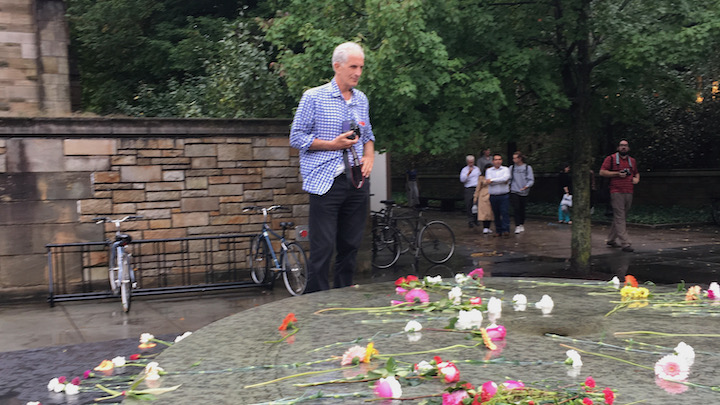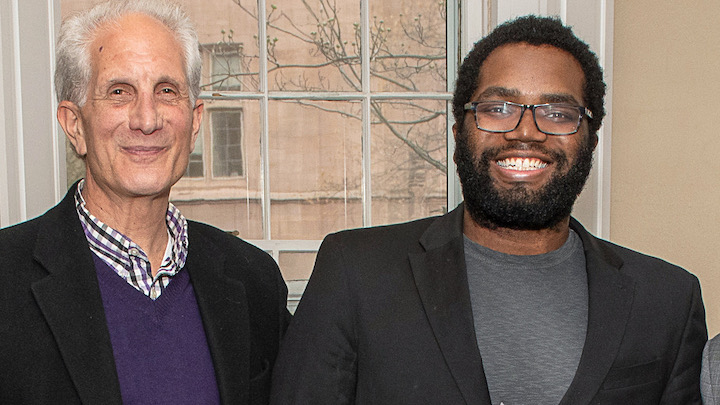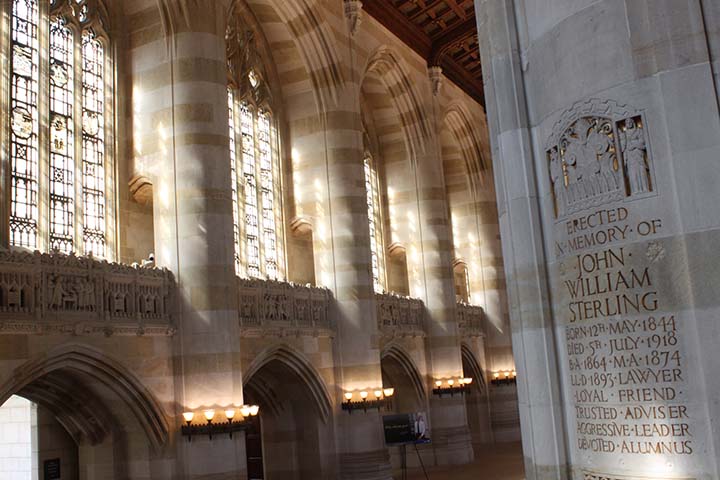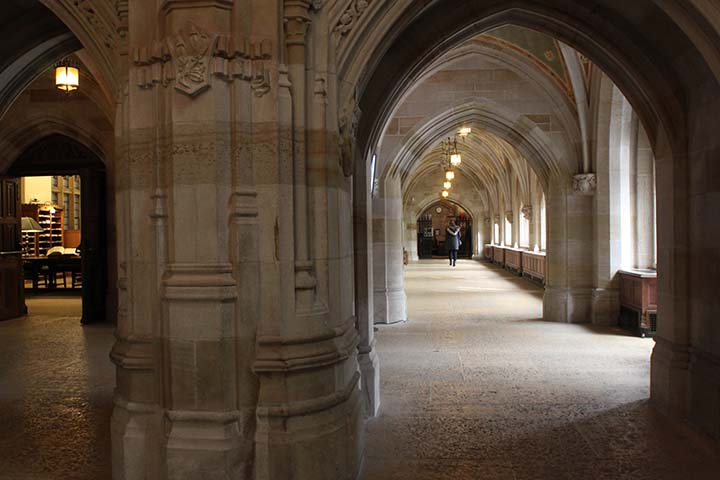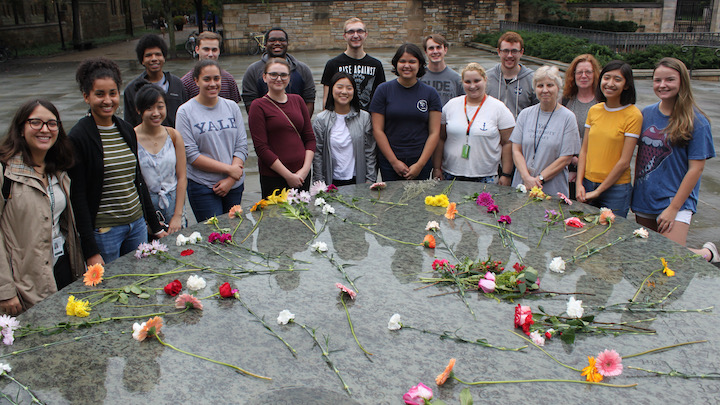In Memoriam: Anthony Riccio
Anthony Riccio, who retired in 2020 as collection maintenance supervisor in Sterling Memorial Library, died on Jan. 16. He was 69. Over 23 years at Yale, he worked to bring and maintain order to the more than 2.5 million volumes shelved in Sterling and Bass Library—but his impact extended far beyond the collections.
“Anthony had a passion for helping people recognize and achieve their full potential,” said Chris Kilheffer, director of library collection services and operations. “He actively looked for ways to support and encourage growth in everyone around him. His colleagues, his staff, and not infrequently me, as his supervisor, benefited greatly from his guidance and wisdom.”
Riccio welcomed and mentored hundreds of student workers. Jaster Francis ’20 remembers learning from Riccio how a volume mis-shelved by just a few places could literally be missing for years. “He taught us to treat every book as if it’s the most important book because, for someone out there, it might be,” Francis said.
For Francis, now studying at Yale Law, Riccio made Sterling Library feel like a home away from home. “I can confidently say that Anthony Riccio changed my life,” he said. “He took a chance on me when I was a wide-eyed first-year at Yale College, and for that, I will forever be grateful. His advice, mentorship, and love truly meant the world to me.”
Riccio grew up in New Haven in a multigenerational Italian American family and, as a young man, traveled to Italy to study art history and visit the remote villages of his forebears. An early job working at a community center in Boston’s North End fed his life-long interests in history and photography. He published multiple books about the Italian American experience in Boston and Connecticut.
He brought his camera and love of history to Sterling, where he frequently photographed and gave tours. He knew the building’s history in vivid detail, from the origins of phrases engraved on the walls to the hidden signatures of workers from the 1930s revealed during a renovation. He could expound on architect James Gamble Rogers’s “storytelling through the imagery of his secular cathedral” and quote the historian David McCulloch on what it was like to study in Sterling in the 1950s.
Riccio was equally focused on documenting history as it happened. In October 2018, after the controversial confirmation of Supreme Court Justice Brett Kavanaugh, students turned Maya Lin’s iconic Women’s Table sculpture outside Sterling into an impromptu flower-strewn memorial to survivors of sexual assault. Seeing it, Riccio halted work and gathered a group of students and staff for a photograph. “We need to capture this,” he said.
For more information, read Anthony Riccio’s online obituary.
Read “Architecture as Storytelling,” Anthony Riccio’s tour description for Sterling Memorial Library.
—by Patricia Carey
